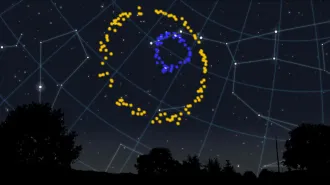
When beginning to open the capsule that collected the asteroid sample, NASA scientists found extra material outside the collection container. That has delayed opening the main capsule but led to a few science discoveries.
Erika Blumenfeld & Joseph Aebersold/NASA







